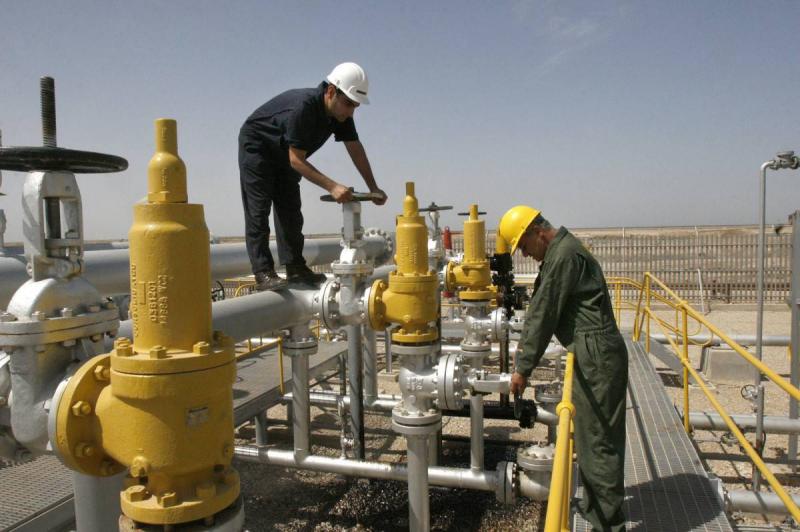The global oil market is in need of a substantial increase in supplies, but the "OPEC+" alliance is expected to provide only a small fraction of what consumers are requesting. Global crude prices have risen to a two-year high, above $75 per barrel, due to strong demand following the easing of the COVID-induced recession. With increasing talks about oil returning to $100 per barrel and fears of rising inflation, the International Energy Agency urges the Organization of the Petroleum Exporting Countries (OPEC) and its partners to address the supply shortage.
When the "OPEC+" alliance, led by Saudi Arabia and Russia, meets next week, it is widely expected to agree on resuming some of its halted production, according to a Bloomberg survey. Meanwhile, representatives from member countries indicate that discussions in this regard are already underway. However, with Saudi Arabia determined to proceed with caution, observers expect that any increase in production will leave the market still thirsty for more oil.
According to Bill Farren-Price, director of Enverus research, "This market is heated... it doesn't seem like the Saudis are inclined to indicate a significant increase in supplies. But even if "OPEC+" raises production, prices will remain strong." The alliance, which consists of 23 countries, has restored about 40% of the 10 million barrels per day that were halted when demand collapsed in 2020. Ministers will meet on July 1st to evaluate the next steps.
While Russia has proposed that the alliance increase supplies, representatives from member countries say that an increase in production for August is under informal discussion. Nonetheless, many officials within the alliance believe that increasing production now would be a mistake, as Iran—an OPEC member—is engaged in diplomatic talks that could lead to a significant rebound in its exports.
Saudi Energy Minister Prince Abdulaziz bin Salman stated on Wednesday that he maintains a cautious stance but does not rule out action, acknowledging that "OPEC+" has a role in "containing and controlling" inflation.
### Modest Increase
Market observers broadly anticipate that some form of production increase will be agreed upon next week, with additional supplies expected to hit the market in August. Thirteen out of fifteen analysts, traders, and refinery executives surveyed by Bloomberg News expect "OPEC+" to utilize its significant excess production capacity. However, the average increase expected for August, estimated at about 510,000 barrels per day, barely equals a quarter of the global supply shortfall anticipated by the alliance itself for that month.
These forecasts can, however, be inaccurate. "OPEC+" has surprised analysts several times since early 2021, lifting production when supplies were expected to remain stable and vice versa. Prince Abdulaziz bin Salman has targeted speculators and could once again surprise expectations in the upcoming meeting. Nevertheless, traders are betting that the alliance will not fully bridge the supply gap, as Brent crude futures stabilized this week despite talks of production increases.
According to Tamas Varga, an analyst at PVM Oil Associates in London, "The market has barely receded… additional production can easily be absorbed by what seems like an unquenchable thirst for oil as the global economy recovers."
### Key Player
Expectations are heavily influenced by the personal position of Saudi Energy Minister Abdulaziz bin Salman, a central figure in the alliance. The prince has repeatedly urged the alliance to move cautiously regarding supply restoration, and last week indicated that this cautious approach "is bearing fruit." By gradually restoring halted supplies, "OPEC+" has managed to stabilize the market recovery that witnessed prices collapsing below zero a year prior.
On Wednesday, the Saudi minister reiterated that "OPEC" and its allies "cannot rule out any fierce resurgence of COVID-19 cases and the risks that poses to fuel consumption." Many countries within the alliance wish for "OPEC+" to maintain this cautious approach by keeping supplies steady in August, according to representatives who requested anonymity. Much of the alliance's concerns stem from Iran, which is involved in negotiations to lift U.S. sanctions on its oil exports.
While these talks have stalled, Tehran could increase production by 1.4 million barrels per day if it reaches an agreement with Washington, according to estimates from the Paris-based International Energy Agency. Reports indicate that this could cover about two-thirds of the shortfall that "OPEC+" anticipates during the remainder of 2021.
### Financial Incentive
Farren-Price from Enverus points out that the alliance's incentive to move slowly may also be financial. The rise of oil prices to $75 per barrel generates fiscal revenues for countries that were under severe pressure due to the market decline in 2020. He adds: "The alliance wants to maintain current or higher prices, and they may succeed."
This will not be challenging in a "thirsty oil" market, according to Saad Rahim, chief economist at Trafigura Group. The oil trading giant based in Singapore, along with Royal Dutch Shell and Bank of America, anticipates that prices may head towards $100 per barrel for the first time since 2014. Meanwhile, Goldman Sachs notes that global fuel consumption—bolstered by the holiday driving season in the U.S.—surpasses supply by 3 million barrels per day. This supply-demand disparity means that fuel inventories worldwide are rapidly declining.
Jeff Currie, head of commodity research at Goldman Sachs, stated in an interview with Bloomberg Television that "demand is rising at the moment… even if OPEC starts pumping supplies in August or thereafter, this market will continue to be characterized by rising demand and tight supply from now until Labor Day in September."




